Discover 11 hidden attractions, cool sights, and unusual things to do in Aswan (Egypt). Don't miss out on these must-see attractions: Unfinished obelisk, Nubian Museum, and Mausoleum of Aga Khan. Also, be sure to include El-Tabia Mosque in your itinerary.
Below, you can find the list of the most amazing places you should visit in Aswan (Aswan).
Table of Contents
Unfinished obelisk

Also known as: مسلة ناقصة
Massive obelisk in an ancient quarry. The unfinished obelisk is the largest known ancient obelisk and is located in the northern region of the stone quarries of ancient Egypt in Aswan, Egypt. It was studied in detail by Reginald Engelbach in 1922.[1]
Nubian Museum
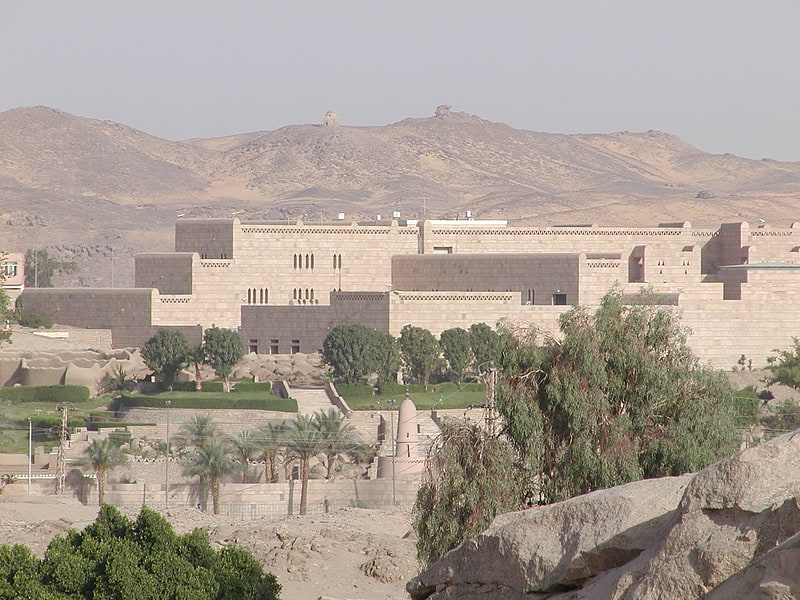
Also known as: متحف النوبة
Historical and cultural Egyptian artifacts. The Nubian Museum is an archaeological museum located in Aswan, Upper Egypt. It was built to a design by architect Mahmoud El-Hakim for an estimated construction cost of LE 75 million. Dedicated to Nubian culture and civilization, it was inaugurated on November 23, 1997, and was awarded the Aga Khan Award for Architecture in 2001.[2]
Address: El Fanadeq St. Downtown, 81111 Aswan
Mausoleum of Aga Khan
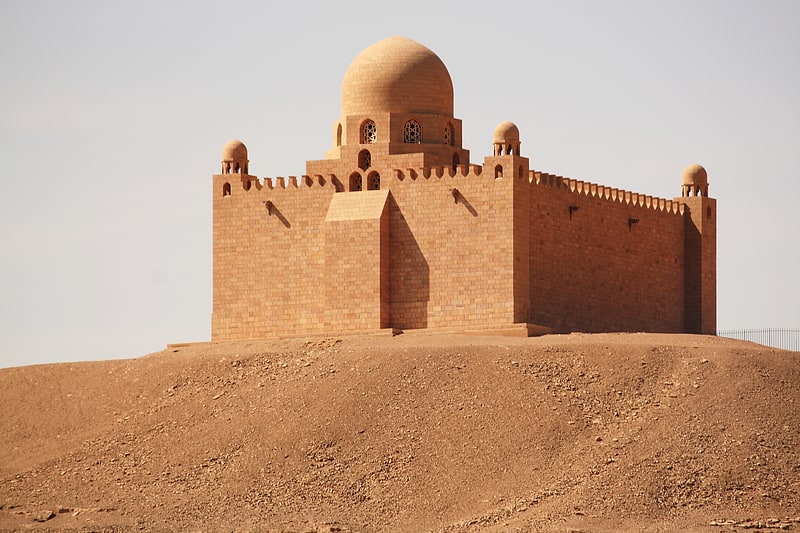
Also known as: ضريح أغا خان
Historical landmark in Egypt. The Mausoleum of Aga Khan is the mausoleum of Aga Khan III, Sir Sultan Muhammed Shah, who died in 1957. The mausoleum is located at Aswan along the Nile of Egypt, since Egypt was formerly the centre of power of the Fatimids, an Ismaili Shia dynasty.
The construction of the mausoleum began in 1956 and ended in 1960. The Aga Khan's wife, Begum Om Habibeh Aga Khan, commissioned the construction of the mausoleum, which initially accepted tourists inside; however, the interior was closed off to the public in 1997.
A red rose is laid on the Aga Khan's tomb every day--a practice first started by Begum Om Habibeh Aga Khan.[3]
El-Tabia Mosque
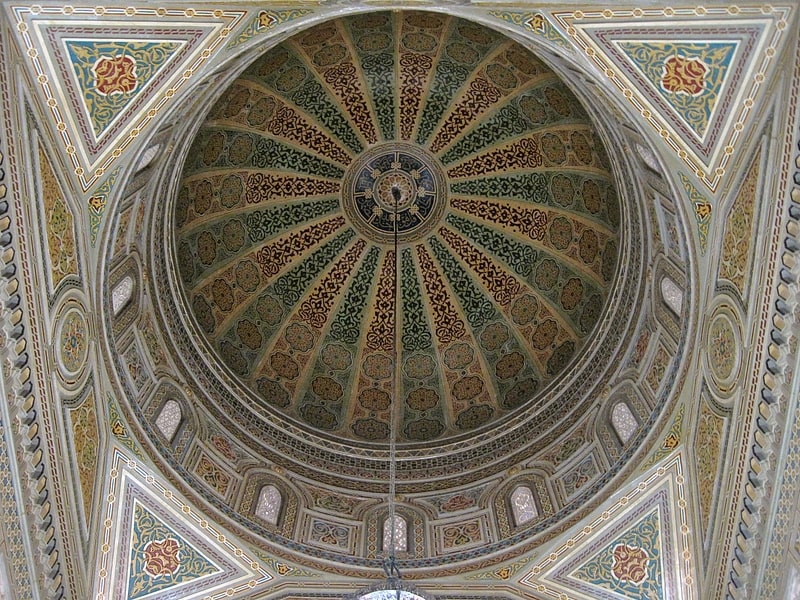
Also known as: مسجد الطابية
Mosque in Aswan, Egypt. El-Tabia Mosque is a mosque in Aswan, Egypt. The mosque is surrounded by scenic gardens. The El-Tabia Mosque is located amidst a park on a hill in the center of Aswan.
It reveals a typical architecture of central-dome mosques having an arched entrance, flanked in this case by two minarets, and the prayer hall beneath a central dome.[4]
Qubbet el-Hawa

Also known as: قبة الهوا
Mosque in Egypt. Qubbet el-Hawa is a site on the western bank of the Nile, opposite Aswan. The name is derived from the dome of the tomb of an Islamic sheikh, but archaeologically, it is usually understood as referring to the site of the tombs of the officials lined up on artificial terraces below the summit of the Nile bank upon which the Islamic tomb stands.[5]
Aswan Museum

Museum in Aswan, Egypt. Aswan Museum is a museum in Elephantine, located on the south-eastern side of Aswan, Egypt. It was set up in 1912 by the British Egyptologist Cecil Mallaby Firth. The museum features artifacts from Nubia, which were housed there during the construction of the Aswan Dam. In 1990, a new department was inaugurated displaying findings that were discovered on Elephantine island itself, such as utensils, weapons, pottery and mummies.
The museum is situated close to the Ruins of Abu, where excavations are still taking place.[6]
Trajan's Kiosk
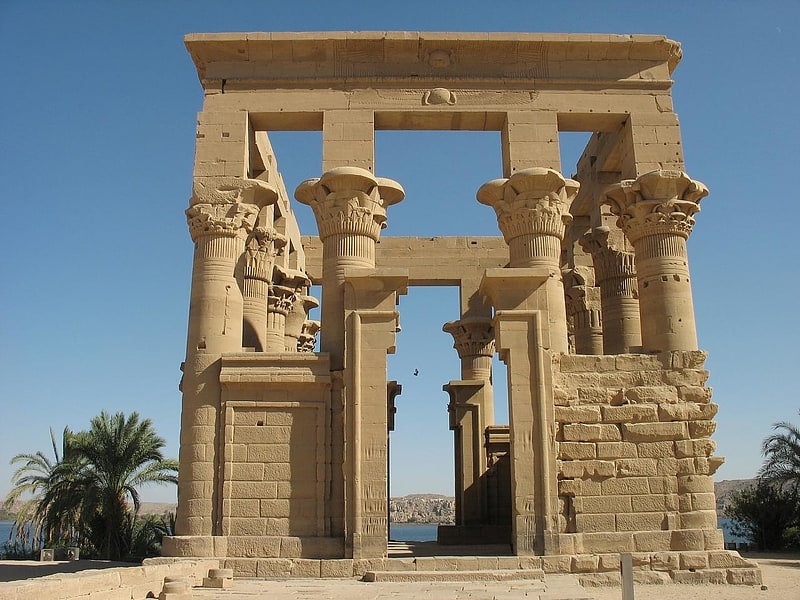
Historical landmark in Egypt. Trajan's Kiosk, also known as Pharaoh's Bed by the locals, is a hypaethral temple currently located on Agilkia Island in southern Egypt. The unfinished monument is attributed to Trajan, Roman emperor from 98 to 117 AD, due to his depiction as pharaoh seen on some of the interior reliefs. However, the majority of the structure dates to an earlier time, possibly to the reign of Augustus. The temple was originally built on the island of Philae, near the lower Aswan Dam, and served as main entrance to the Philae Island Temple Complex from the Nile river. It was relocated to Agilika Island in the 1960s by UNESCO to save it from the rising waters of the Nile that followed the construction of the Aswan High Dam.
This 15-x-20 metre kiosk is 15.85 metres high; its function was likely "to shelter the bark of Isis at the eastern banks" of Philae island. Its four by five columns each carry "different, lavishly structured composite capitals that are topped by 2.10-metre-high piers" and were originally intended to be sculpted into Bes piers, similar to the birthhouses of Philae, Armant, and Dendera though this decoration was never completed.
The structure is today roofless, but sockets within the structure's architraves suggest that its roof, which was made of timber, was indeed constructed in ancient times. Three 12.50-metre-long, presumably triangulated trusses, "which were inserted into a ledge at the back of stone architecture, carried the slightly vaulted roof." All the fourteen columns are connected by a screening wall, with entrances in the eastern and western facades. This building represents an example of the unusual combination of wood and stone in the same architectural structure for an Egyptian temple. The attribution to Emperor Trajan is based on a carving inside the kiosk structure, depicting the emperor burning incense before Osiris and Isis.[7]
Elephantine
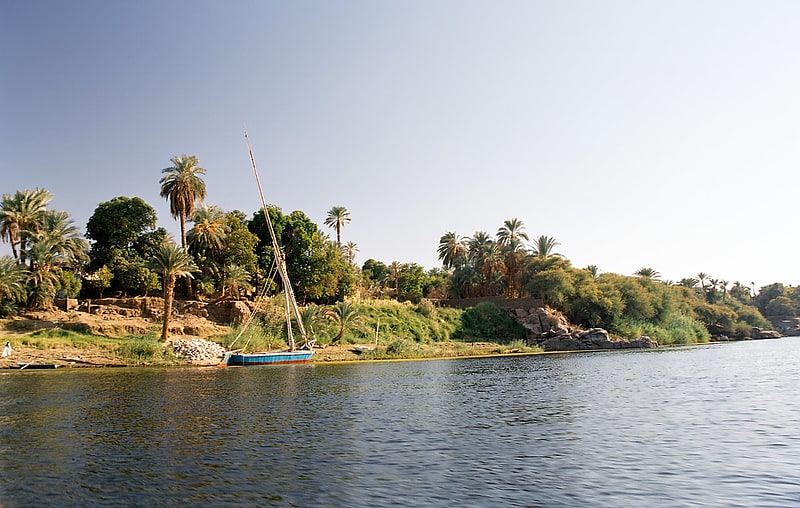
Also known as: إلفنتين
River island with archaeological sites. Elephantine is an island on the Nile, forming part of the city of Aswan in Upper Egypt. The archaeological sites on the island were inscribed on the UNESCO World Heritage List in 1979 along with other examples of Upper Egyptian architecture including Abu Simbel and Philae.[8]
Temple of Satet
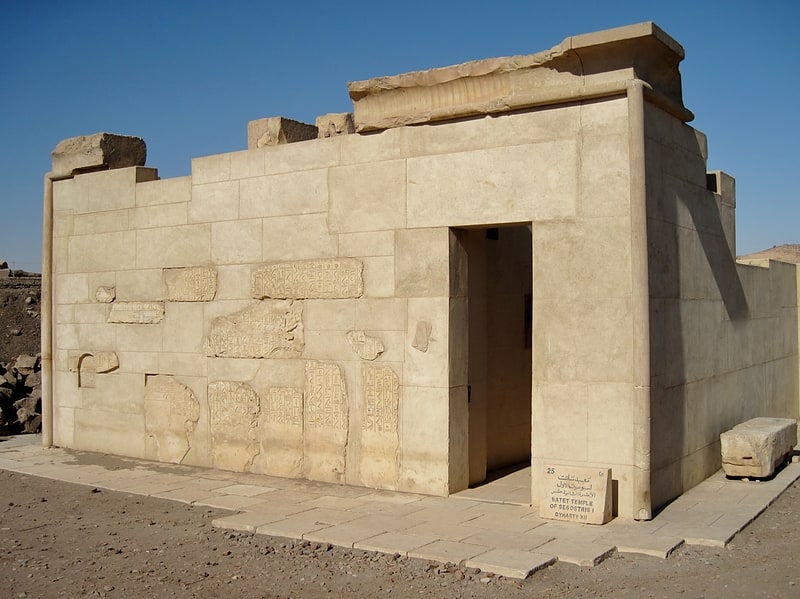
The Temple of Satet or Satis was an ancient Egyptian temple dedicated to the goddess Satet, a personification of the Nile inundation. The temple was located on the Nile Valley island of Elephantine, Egypt. Founded during the late Predynastic Period around 3200 BC, it was enlarged and renovated several times from the Early Dynastic Period onwards over the next 3000 years until the Ptolemaic Period. The temple of Satet is the best example of an ancient Egyptian temple whose construction is attested over the entire pharaonic period.[9]
Tombs of the Nobles
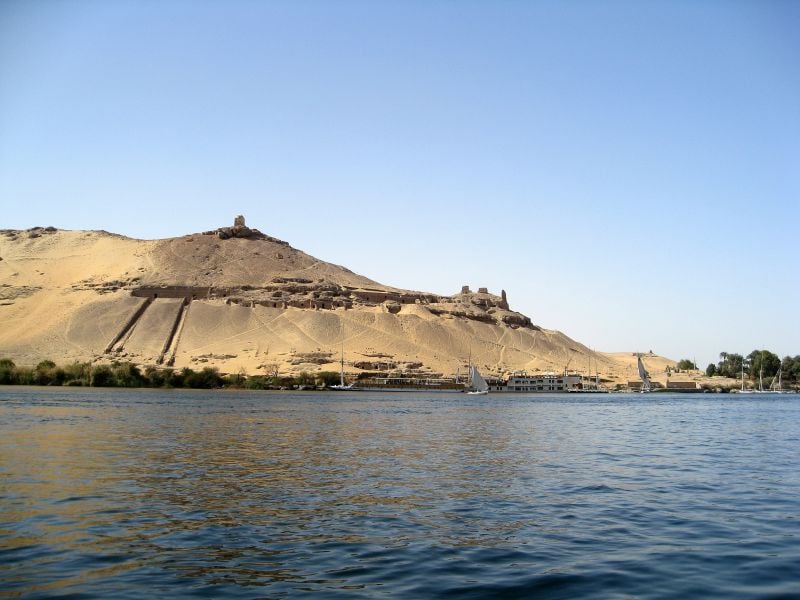
Ruins
Monastery of St Simeon
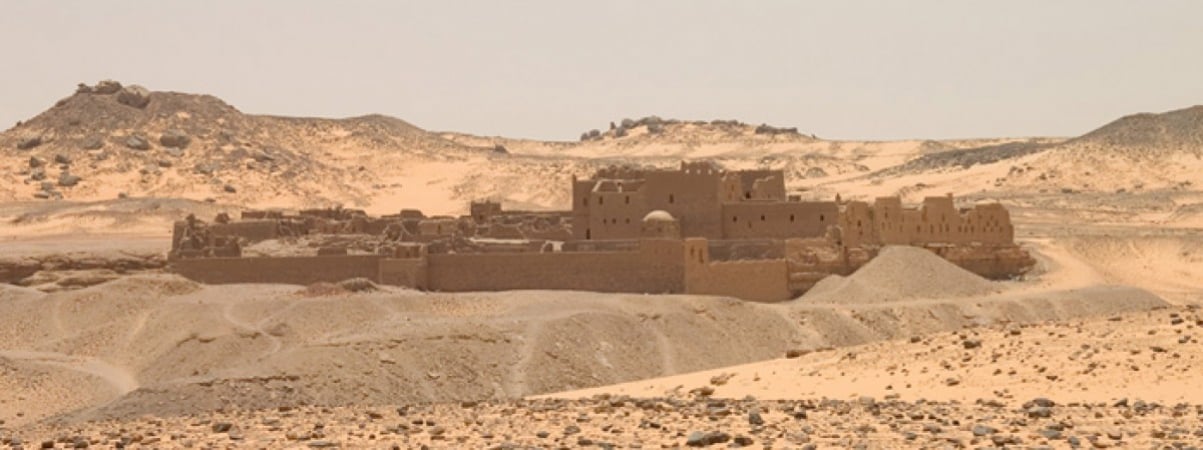
Ruins